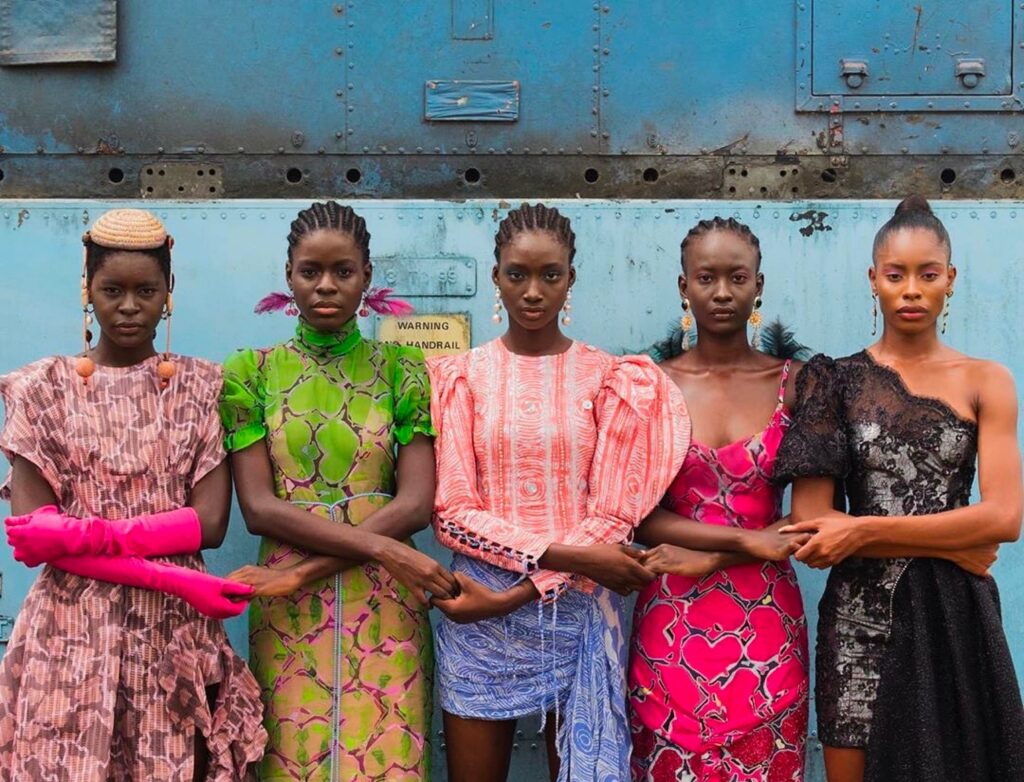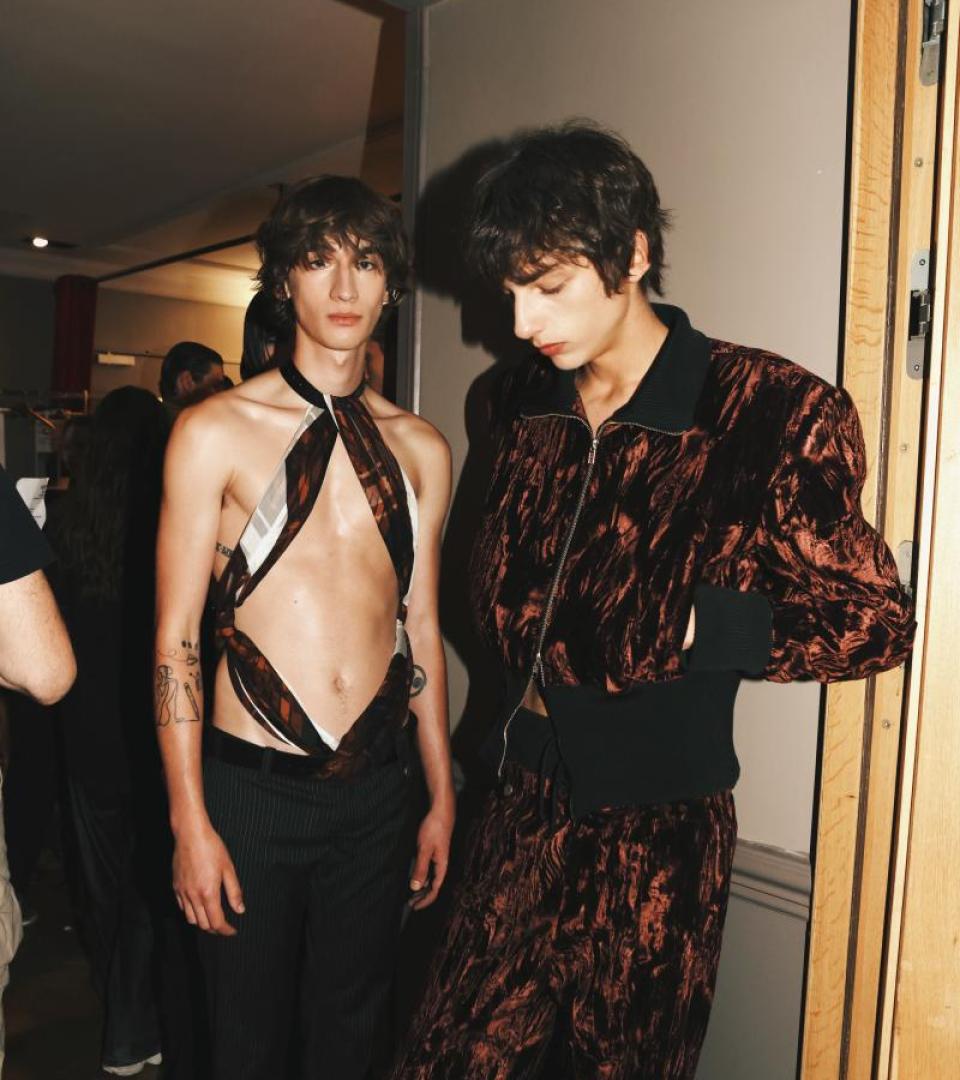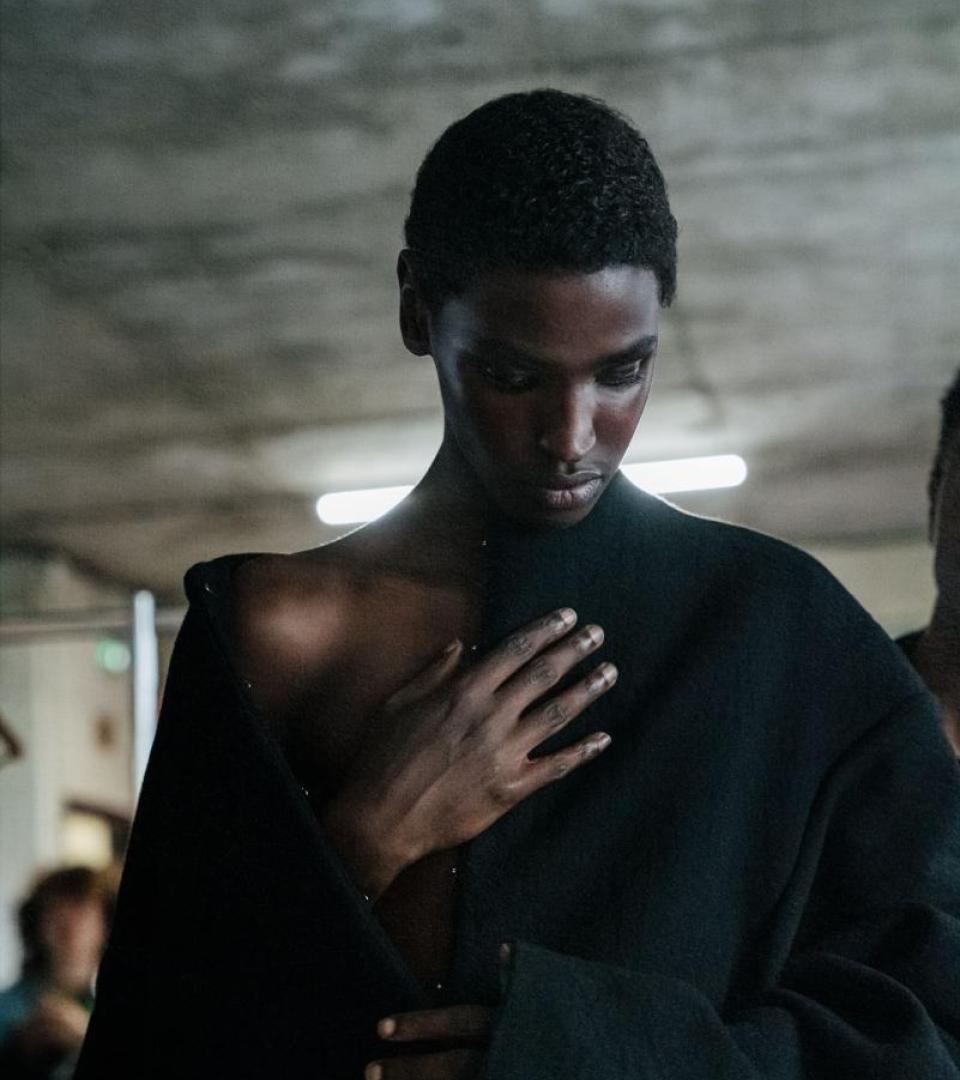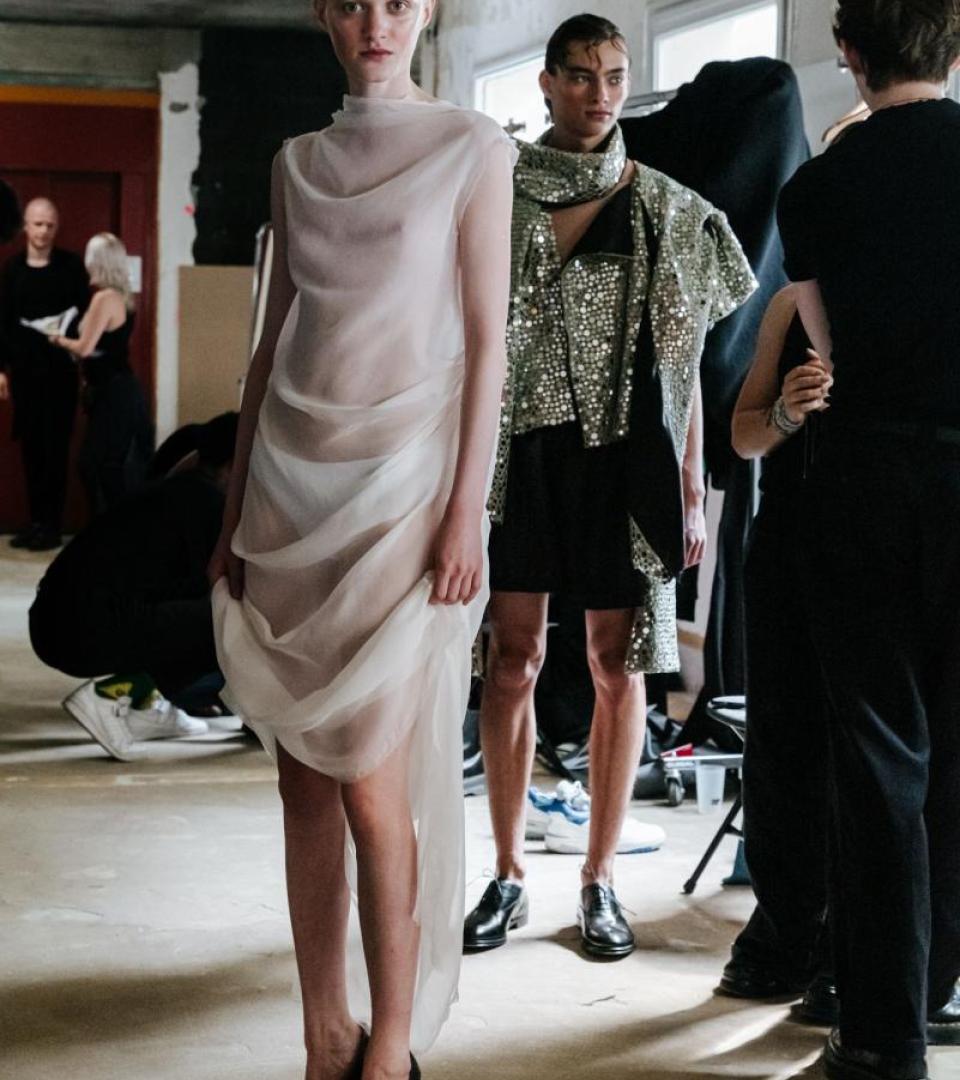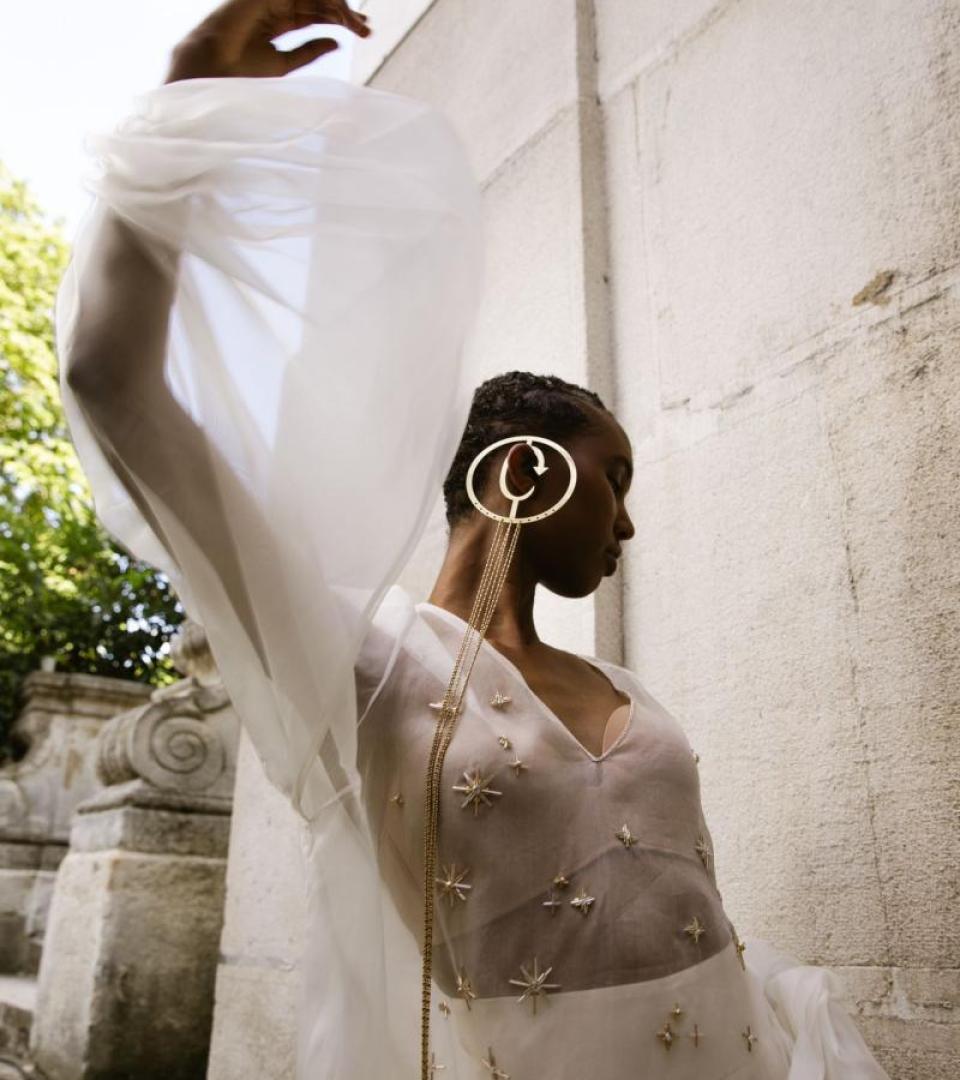Africa Fashion at the Victoria & Albert Museum
“I feel like now, more than ever, African designers are really taking charge and telling people authentic stories,” says designer Thebe Magugu in a video for Africa Fashion, a must-see exhibition at the Victoria & Albert Museum in London. With more than 250 objects by 45 designers from upwards of 20 countries, the show offers an expansive survey of creation and craft from across the continent. Exploring such themes such as the African Cultural Renaissance and the importance of cloth-making, while also highlighting key figures over several decades, the exhibition provides fascinating and essential context for presenting a new generation of designers who are redefining and interpreting artisanal techniques with distinctive expression. Supported by Gregory Annenberg Weingarten, GRoW @ Annenberg with additional support from Bank of America and Merchants on Long with thanks to Africa Fashion Foundation, the museum presents 70 new acquisitions in addition to pieces from the personal archives of visionary African designers. Project curator Elisabeth Murray, who worked alongside the V&A’s Dr Christine Checinska, Senior Curator of African and African Diaspora Textiles and Fashion, provides a window into this dynamic, culturally rich exhibition.
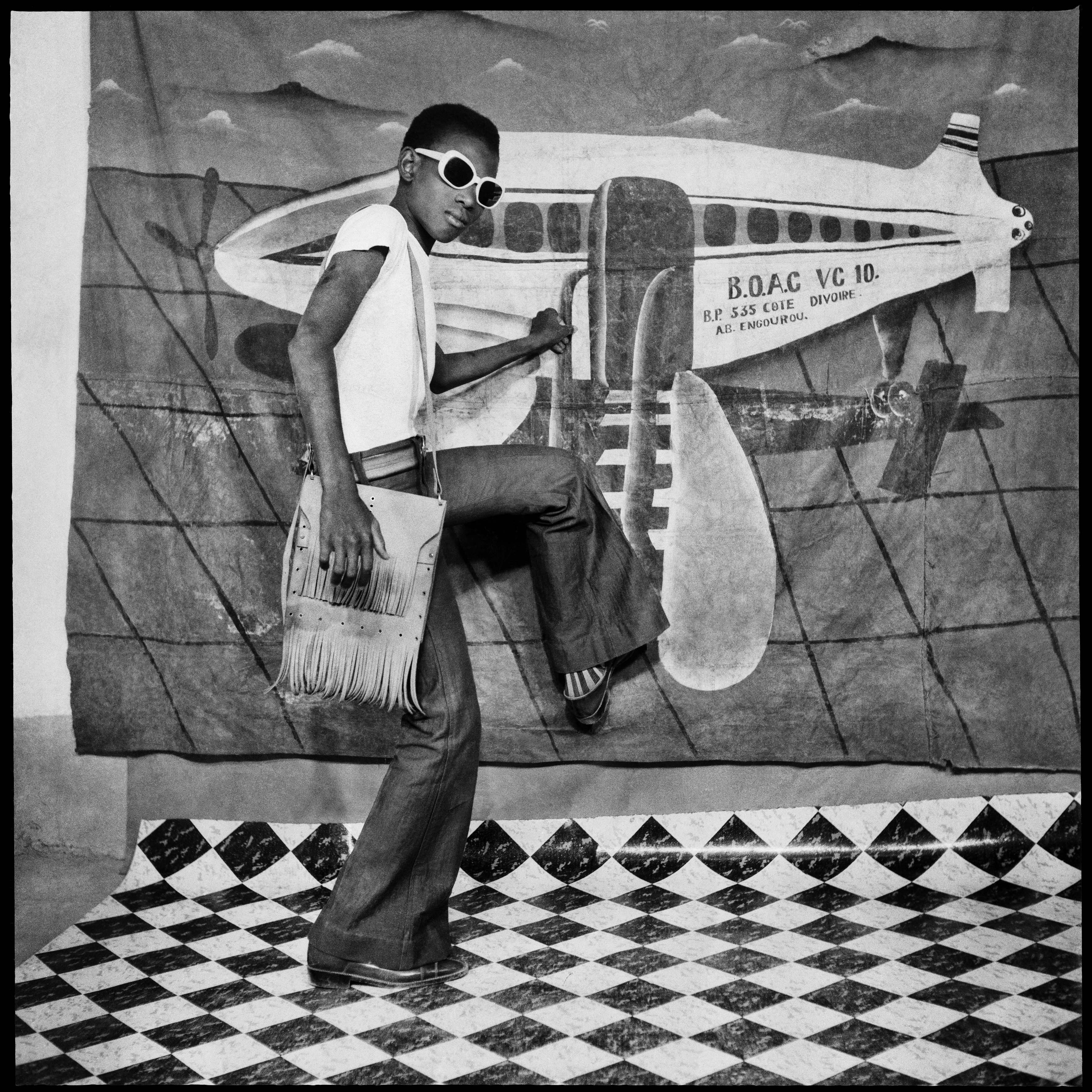
There are innumerable regional and cultural differences across the continent. How does this diversity play out in the exhibition?
Contemporary African fashions are as eclectic and varied as the continent itself, which consists of 54 countries and more than 1.3 billion people. African fashions have for too long been ignored or put into a stereotypical box. Africa Fashion celebrates the abundance and diversity of the fashion scene across the continent, from the work of Lagos Space Programme, which is a celebration of àdìrẹ cloth, to Katungulu Mwendwa’s innovative pattern cutting.
By the same token, what might be some of the shared characteristics of fashion originating in Africa?
A love of the continent unites many of our designers as well as a desire to tangibly build a better future and a better society through their work. Sustainability is ground-zero for so many of the creatives in Africa Fashion, taking a broad view of sustainability including re-use, slow production, ethical working, local sourcing and circular production.
In what ways do we see contemporary designers bringing a fresh perspective to the heritage of fashion across Africa?
Today, African fashion creatives are charting their own course, pushing boundaries, and opening up conversations around culture, race, gender and sexuality. For some, the continent is the starting point, a rich well of inspiration and material cultures, from Yoruba aṣọ-òkè cloth to Moroccan embroidery. For others, architectural lines, innovative pattern cutting or sustainable practice are the driving force.
The work of Lagos Space Programme is an interesting example of bringing fresh perspectives. Founded by Adeju Thompson, Lagos Space Programme is a non-binary fashion design project exploring traditions of Yoruba culture. Àdìrẹ, a resist-dyed indigo cloth historically made by the Yoruba, is a staple of Thompson’s work. Their Post-Àdìrẹ project explores the future of this textile, and its role in storytelling, looking to the past not as a static thing, but something to inform and inspire the future.

Can you offer an example or two of the overlap between politics and creative expression?
Political expression is woven throughout the work of so many creatives in the exhibition. Sindiso Khumalo founded her eponymous, ready-to-wear womenswear label in 2015 in Cape Town, South Africa. Through her collections Khumalo recognizes and celebrates powerful Black women in history, such as activist Charlotte Maxeke (1871-1939) and Sarah Forbes Bonetta (1843-1880) (Yoruban princess and god-daughter of Queen Victoria). The quilted ‘North Star’ suit on display in the exhibition was inspired by African American abolitionist Harriet Tubman (1822-1913) and her role in the Underground Railroad, helping enslaved people make a break for freedom. Safe houses hung quilts outside as a signal that they were a place of refuge. Made with quilted squares arranged in a star motif, Khumalo references this history in her design.
Photographer and stylist Gouled Ahmed’s self-portraits also have a powerful message, challenging the lack of nuance in the depictions of non-binary Black Muslims, with Gouled noting ‘In this series, I use self-portrait photography to reclaim agency over how my narrative is told and to revolt against ingrained hegemonic cultural norms.’
Imane Ayissi, who shows on the Haute Couture calendar, is prominently showcased at the start of the exhibition. In what ways do his creations resonate as a bridge across time, across techniques, across culture?
In many ways Ayissi’s work sits at the crossroads of fashion systems, connecting Africa and its global diaspora alongside artisanal craft-making and haute couture. At the start of the exhibition, you see a piece from his Autumn/Winter 2019 collection. French silk is juxtaposed with luxurious Cameroonian raffia, a voluminous cape-style top are paired with palazzo trousers, all in bright fuchsia pink, bringing together materials and style references from around the world. Here, his work is used to illustrate that African fashions are beyond definition and that creatives can and do choose their own paths.

At a time when so much fashion is mass-produced, what can visitors discover about the preservation of artisanal craft and/or innovation of tradition?
Innovation is at the heart of the contemporary African fashion scene. For many designers this is focused on textiles, both re-imagining ancient techniques for the current moment, as with Lagos Space Programme, and also creating new techniques, as with NKWO’s DAKALA CLOTH.
Nkwo Onwuka, founder of NKWO, works with small-scale artisan makers across the continent that specialise in hand crafts like dyeing, weaving, beading and embroidery. Onwuka explores ways of using waste materials in her designs while still preserving traditional textile craft skills. This led to her invention of DAKALA CLOTH, made from waste fabric which is stripped and then sewn back together with a technique that gives the appearance of traditional woven cloth.
For those unable to make the show, is there any highlight or story that must be shared here?
The exhibition is full of so many pieces each will many stories, so it is hard to choose one! One piece we often pause at is a Grand Boubou made in Dakar, Senegal in 1966. Made of green organza embroidered with silver flowers it’s a stunning piece. It was designed for Professor Lalage Bown to wear to the 2nd International Conference of Africanists, hosted by the then President Leopold Senghor. Made by a local tailor, it speaks to the integral role of tailors, seamstresses and dressmakers in the fashion scene. While their names may have been lost to time, their work and legacy as key instigators of fashion innovation endures.
This interview has been lightly edited for clarity.
Africa Fashion runs through April 16th, 2023 at the Victoria & Albert Museum, London.
